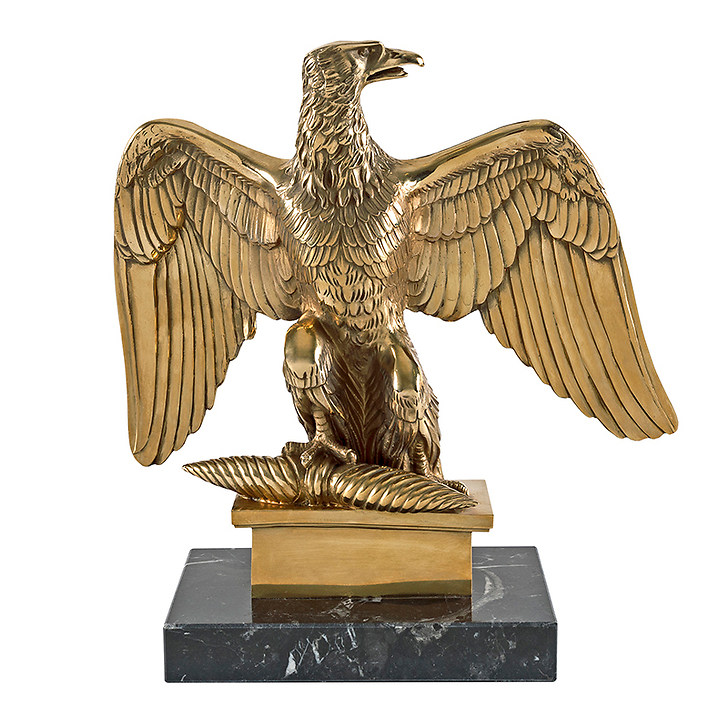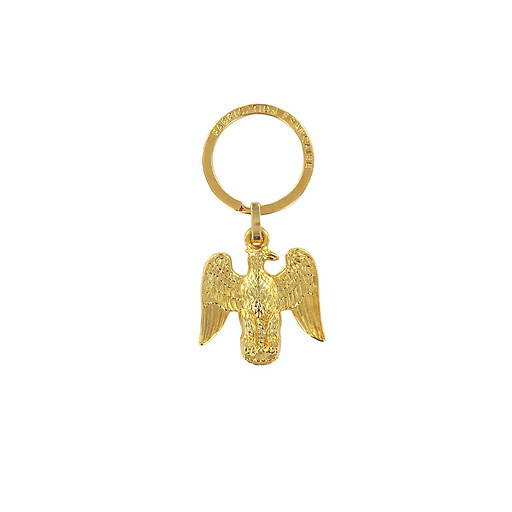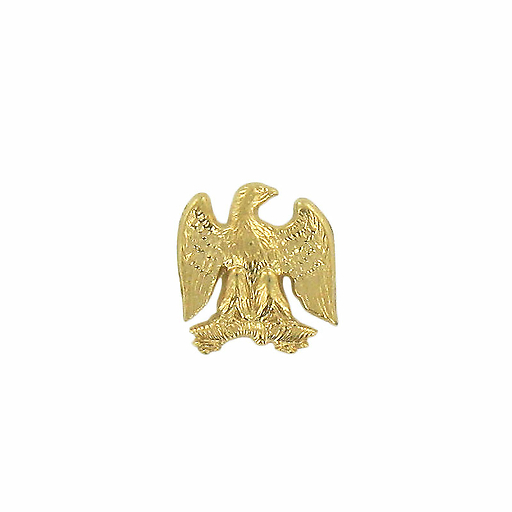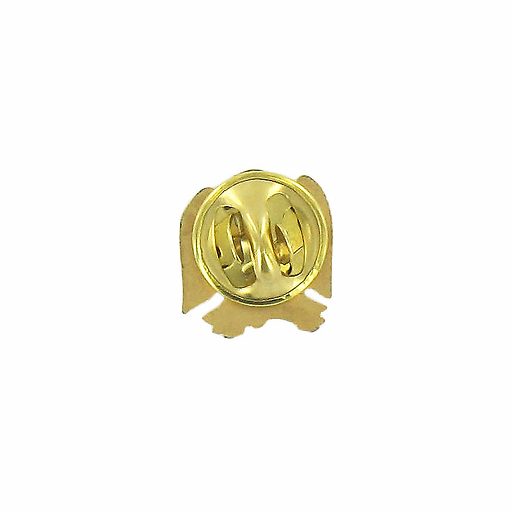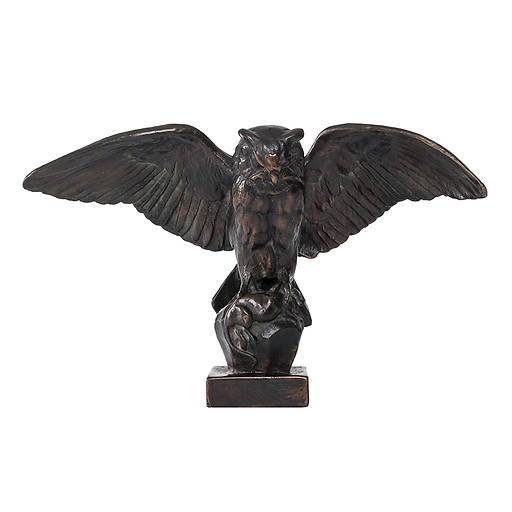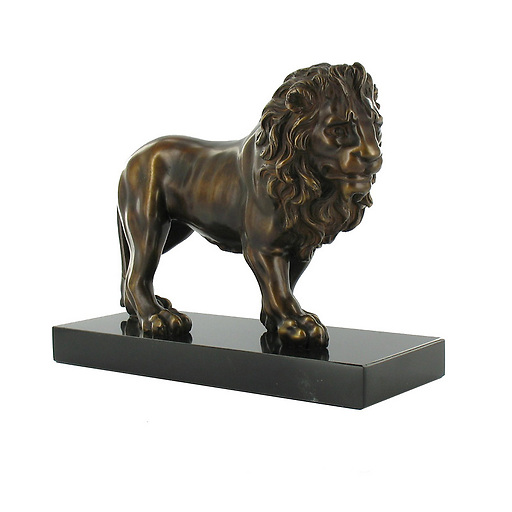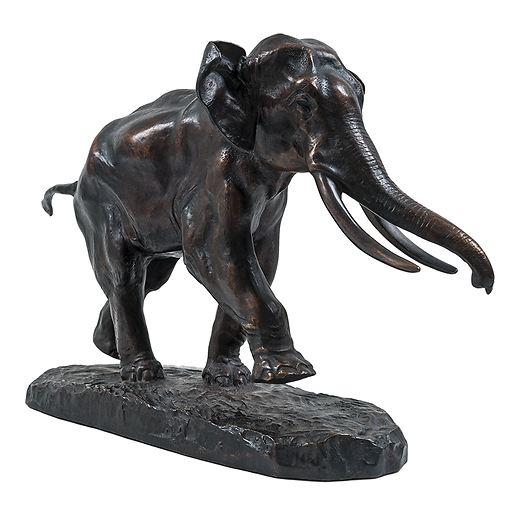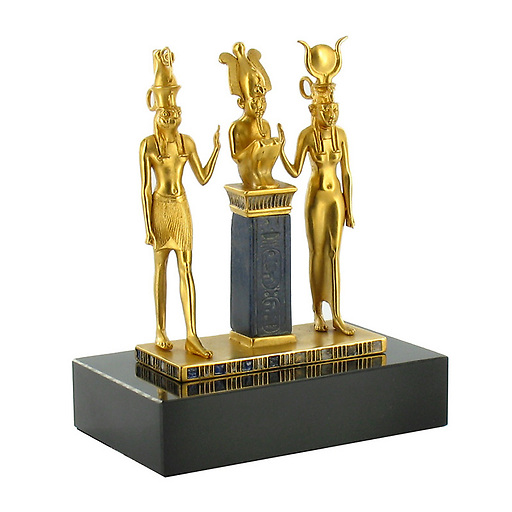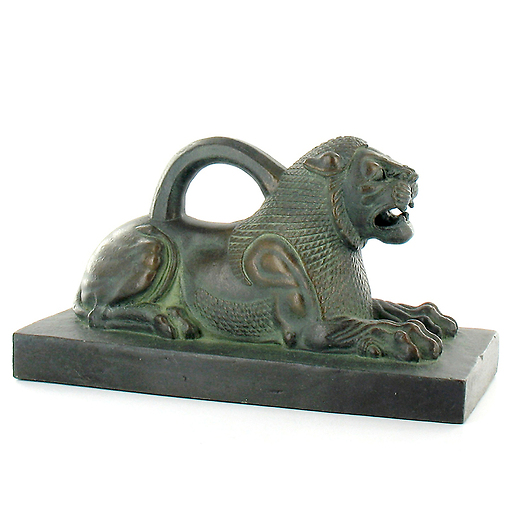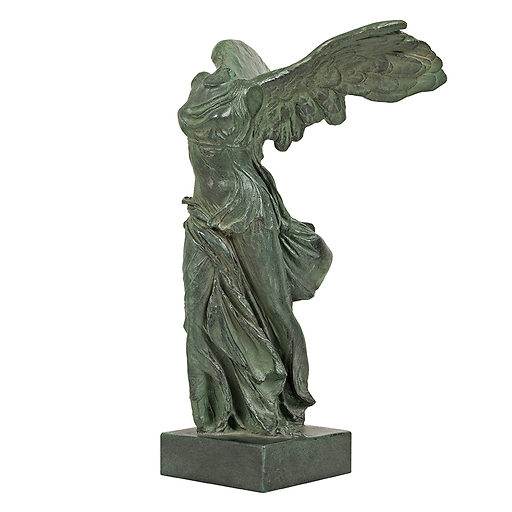Reproduction in bronze with a hand patina. Mold made from an impression of the original work.
Associated since antiquity with military victories, the bird of Jupiter leaning on the thunderbolt became the emblem of the First Empire after having been that of imperial Rome. In the image of the signs of...
Read more
Reproduction in bronze with a hand patina. Mold made from an impression of the original work.
Associated since antiquity with military victories, the bird of Jupiter leaning on the thunderbolt became the emblem of the First Empire after having been that of imperial Rome. In the image of the signs of the Roman armies, Napoleon had an eagle, the traditional symbol of heraldry, placed at the top of the flagstaff of his regiments.
Designed by the sculptor Chaudet in 1804, its realization in gilded bronze had been entrusted to the famous bronzier Thomire. The distribution of the flags surmounted by these eagles took place solemnly at the Champ-de-Mars a few days after the coronation, a ceremony during which the new Emperor swore in his army.
In 1811, in order to reduce the weight of the eagles, which was considered excessive, it was decided that instead of being solid, the eagles would be hollow and made by assembling two welded plates. Most of them were melted down at the end of the Empire or broken to avoid being returned, and were modestly restored in gilded wood during the Hundred Days period, the period between Napoleon I's return from Elba and his second abdication four days after Waterloo, that is to say from March 20 to July 8, 1815.
Close
